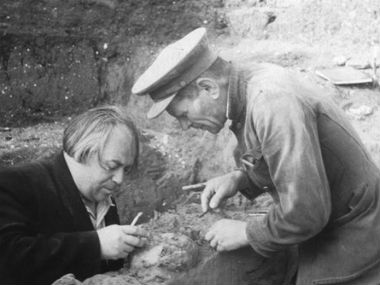Berlin: The human populations now predominant in Eurasia and East Asia probably split between 36,200 and 45,000 years ago, according to a study released Thursday.
Researchers used new techniques to analyze genetic samples from the shin bone of a young man who died at least 36,200 years ago near Kostenki-Borshchevo in what is now western Russia. The study, published in the journal Science, concludes that Kostenki man shared genetic sequences with contemporary Europeans, but not East Asians.
A separate study published last month in the journal Nature determined that a 45,000-year old sample found in Siberia contained sequences ancestral to both modern East Asians and Europeans.
Taken together, these two studies suggest a time frame of about 9,000 years in which the two genetic populations could have diverged, said Eske Willerslev, an evolutionary biologist at the University of Copenhagen, Denmark, one of the authors of the Science paper.
Even on its own the Kostenki sample challenges previous theories that modern Europeans emerged only when hunter-gatherers mixed with a farming population that moved in from the Middle East after Ice Age glaciers receded from Europe about 10,000 years ago, the start of a period known as the Neolithic.
“People had largely tended to think that Europeans today were mostly influenced by the Neolithic expansion from the Middle East,” said Sarah Tishkoff, a professor of genetics at the University of Pennsylvania who wasn’t involved in the latest study. “But if they’re correct they are suggesting that this person 36,000 years ago already had some similarity to the people who contributed to this Neolithic expansion from the Middle East.”
Although Kostenki man — who had dark skin, brown eyes and was relatively short — belonged to a group of humans that ultimately died out, the DNA fragments he left are enough to draw a line in European genetic history going back at least 36,000 years, said evolutionary biologist Marta Mirazon Lahr of the University of Cambridge, another author of the Science study.
Associated Press


)




)
)
)
)
)
)
)
)